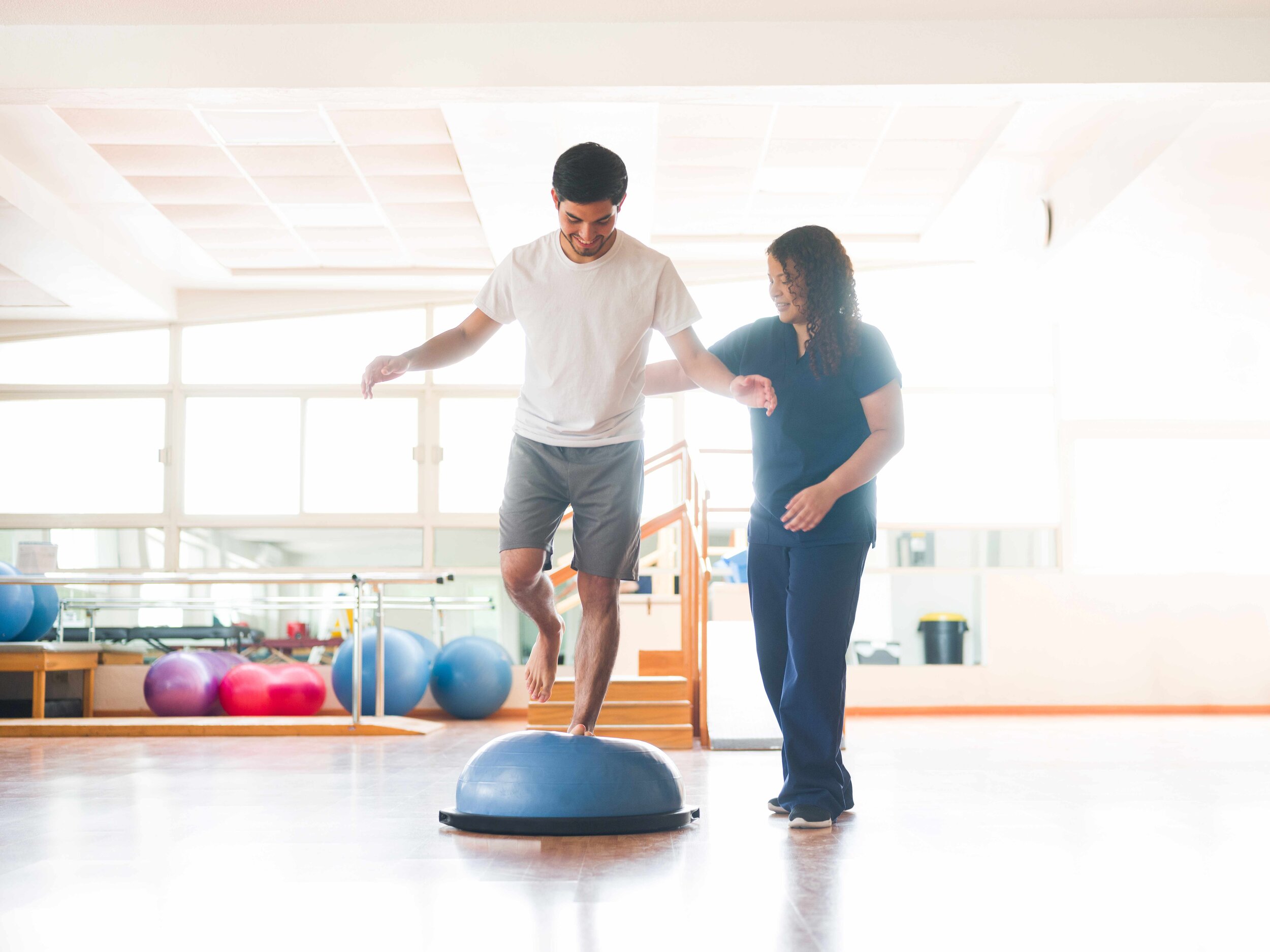Knowing that the human movement system is intricately connected, we look beyond the region of concern to consider every component in the chain. With this awareness, we restore stability, range of motion, strength, and muscle balance to ensure long-term recovery.
Habitual movement patterns, repetitive movements, past injuries or surgeries, and incomplete rehabilitation from previous injuries can alter the movement system. We look at alignment and functioning across every component, and identify any compensatory movement patterns or impairments. Rehab exercise focuses on restoring balance between the the underdeveloped and overdeveloped muscles to increase joint ROM, reduce tissue and fascial tension, and improve pain. We tackle the functional limitations left over from acute rehabilitation, and get you back to full functional capacity.
Our clinicians have degrees in Kinesiology, with additional training in corrective and medical exercise.
Our Three Pillars
Injury Prevention
Most of us reach for help after an injury, but how about preventing one in the first place?
Our active therapy approach targets and strengthens the small stabilizer muscles, as well as the prime mover muscles of the joints. We do focus more on enhancing joint stability as we tend to lose joint stability with age and pain or injury. Poor joint stability can create pain and leave the joints vulnerable to injury. The mover muscles of the joints become tight and overactive to attempt to create more stability, which limits ROM and contributes to pain. Our prehab classes target the common weak links of the movement chain, and to restore strength imbalances in the body between the stabilizers and prime mover muscles with the primary goal of injury prevention.
Core combo
Functional Strength
Trx Strenght
Resistance Combo
Injury Rehabilitation
We work with clients from the sub-acute (7 days post) stage of injury, to chronic stages of injury (up to years after). We prescribe medical and corrective exercise for the affected region and adjacent areas to restore stability, strength, ROM, and function, and address any muscle imbalances and dysfunctional movement patterns. You can work one on one with a kinesiologist, or take our REHAB classes.
If you are a candidate for a joint replacement surgery, our rehab classes are an excellent way to build strength post surgery making your recovery faster and easier.
Shoulder Rehab
Beginner Core / Core Rehab
Hip Rehab
Knee Rehab
Rehabilitation Maintenance
If you have recovered from an injury and need a maintenance solution to stay strong and healthy, attend our REHAB and PREHAB classes
Our REHAB classes are suggested if you are still experiencing weakness and loss of function on your affected side. Our PREHAB classes are suggested if strength is comparable between sides and imbalances have been corrected.
We will continue to build on your physical rehabilitation to prevent recurring injuries.
Suggested Classes:
Core Combo
Resistance Combo
Functional Strenght
TRX Prehab
Rehab to Strength
Why is Active Rehab Important?
Damaged tissue and bone need to reestablish their ROM, stability and strength to sustain the physical demands of our daily needs. Without active therapy to reestablish damaged or dysfunctional regions, other tissues take on the role of injured areas to avoid pain and compensate for function. Over time, this creates dysfunctional movement patterns and muscular imbalances that leave people vulnerable to continued injury and pain. Active therapy is critical for getting tissues and bones functional post injury and restoring healthy movement mechanics.








